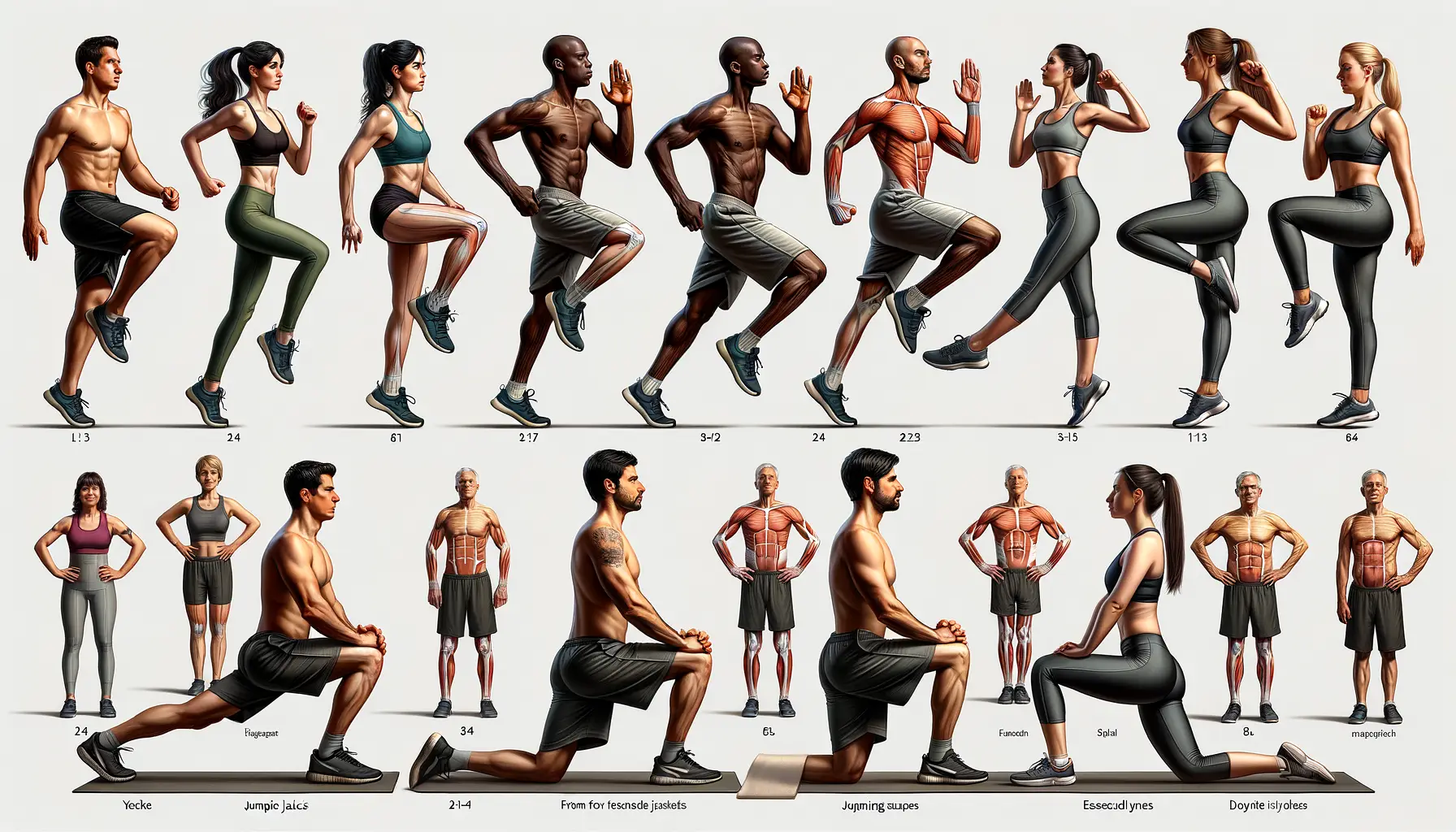
How to Avoid Common Workout Injuries
Understanding Common Workout Injuries
Why Do Injuries Happen? Let’s Break It Down
Picture this: you’re crushing your workout, feeling like a superhero—until, out of nowhere, a sharp twinge in your knee or shoulder stops you in your tracks. What just happened? Most workout injuries stem from a few common culprits: overloading your body, skipping proper warm-ups, or not focusing on technique. Your muscles and joints are like a finely tuned orchestra; if even one part plays out of sync, the whole performance can fall apart.
Some frequent offenders include:
- Sprains and strains: These are often caused by pushing too hard or moving awkwardly during an exercise.
- Tendonitis: An overuse injury that flares up when you’ve been doing repetitive motions without enough rest.
- Back pain: A common side effect of lifting weights with poor posture or form.
Who’s at Risk?
You might think injuries only happen to newbies, but seasoned gym-goers aren’t immune. Ego lifting—a.k.a. trying to outdo everyone else in the gym—often leads to trouble. And let’s not forget the “weekend warriors” who go all-in after a long hiatus; their bodies simply aren’t ready for that level of intensity. Whether you’re new or experienced, ignoring your limits is the quickest route to injury.
Preparation Before You Start Working Out

Set the Stage for Success
Before you even lace up your sneakers, take a moment to prepare—think of it like laying a strong foundation before building a house. The better your prep, the sturdier your workouts will be! For starters, check your gear. Old running shoes? That’s like trying to run a marathon in flip-flops. Invest in supportive, activity-specific footwear and breathable attire that lets you move freely.
Now, let’s talk about fuel! Skipping meals before exercise is a rookie mistake. Your body needs energy, just like a car needs gas. Think of options such as a banana with nut butter or a small bowl of oatmeal about an hour before you start.
Your Warm-Up Matters More Than You Think
Jumping straight into action is tempting, but it’s like throwing frozen meat onto a sizzling grill—not smart! Instead, give your muscles a gentle nudge to wake them up. Include dynamic stretches like:
- Leg swings to loosen up stiff hips
- Arm circles to unlock shoulder mobility
- Walking lunges to engage your core and legs
This simple step primes your body while mentally signaling, “Game on!” Preparation isn’t extra fluff—it’s what separates injuries from triumph.
Proper Technique and Form for Injury Prevention

Why Proper Technique is Your Secret Weapon
Picture this: you’re lifting a kettlebell, feeling unstoppable, but then—bam! A sharp twinge shoots through your lower back. What went wrong? The answer often lies not in how much you’re lifting, but *how* you’re lifting it. Using the right technique can mean the difference between building strength and sidelining yourself for weeks.
Let’s take squats as an example. If you let your knees cave in or round your spine, you’re setting yourself up for trouble. Instead, keep your chest upright, engage your core like you’re bracing for a punch, and ensure your knees track over your toes. It’s about quality, not quantity—your ego doesn’t belong in the gym.
Small Adjustments, Big Impact
Even everyday gym-goers can get sloppy when fatigue sets in. To keep injuries at bay, make these tweaks during your workouts:
- Warm-up smart: Prime your body with dynamic stretches; think leg swings, arm circles, or inchworms.
- Control the weight: No yanking cables or dropping barbells—move with precision.
- Breathe right: Exhale when pushing or pulling, inhale when returning to start.
Focus on form like it’s choreography—each movement deliberate, each effort intentional. Ignore this, and you’ll dance your way right into injury’s trap!
Listen to Your Body and Recognize Warning Signs

Signals Your Body Can’t Afford to Ignore
Your body is like a finely tuned instrument—it sends out alerts when something’s not right. But here’s the thing: it doesn’t come with neon warning signs. It’s up to you to interpret the subtle whispers before they turn into screams. Feeling a slight pull in your knee during squats? That’s your body saying, “Hey, slow down before I break down!”
Pain isn’t just discomfort; it’s your body’s built-in alarm system. While some soreness is normal after a good session, sharp or sudden pain is never something to push through. Pay attention if:
- That “tightness” doesn’t ease up after warming up.
- You feel a popping or snapping sensation (it’s not just dramatic TV injuries).
- Swelling or redness starts creeping in—like a red flag waving at you.
The Conversation You Should Have With Yourself
Exhaustion beyond the satisfying kind? Dizziness mid-plank? These are your cues to pause, breathe, and reassess. Working out is about building strength, not breaking yourself. Next time you feel “off,” ditch the mindset that rest equals weakness. Instead, think of rest as your secret weapon for long-term success.
Post-Workout Recovery and Best Practices

Why Recovery Is the Secret Weapon of Fitness
Your muscles just put on a show. They’ve lifted, stretched, sprinted, or maybe danced through your workout. Now, they need some VIP treatment. Think of post-workout recovery as the backstage pass to your fitness success—it’s where the real magic happens.
First stop? Hydration. Your body just lost a ton of water through sweat, so grab that bottle and let it rain hydration back into your system. Add electrolytes if you’re feeling fancy—it’s like giving your cells a recharge button.
Next, food! Within 30 minutes of your workout, nourish those tired muscles with a mix of protein and carbs. Eggs and whole-grain toast, Greek yogurt with berries, or even a protein shake are your new best friends. Think of them as fuel for your tank.
When Rest Becomes a Power Move
Overachievers, take note: resting isn’t slacking. It’s strategy. Sleep is where your body rebuilds muscle, balances hormones, and lets inflammation cool its jets. Short on time? Active recovery works wonders too—light yoga, foam rolling, or a walk can ease tension without sending you to the couch permanently.
For an extra boost:
- Practice static stretching to increase flexibility.
- Use a foam roller for tight spots—your quads will thank you.
- Try a quick ice bath or contrast shower to minimize soreness.
Your body shows up for you in every workout. When you invest in recovery, you’re ensuring it can do it all over again tomorrow—and better.
You may also like
Latest Articles
- Old Age Is a Joy Nowadays: Free Games That Will Help to Boost Your Memory

- The Historical Significance of Coins Depicting Sports

- Mental Training for the Self: How to Stay You Without Disappearing in Others

- Why Strength and Conditioning Are Vital for Athletes

- How to Organize a Fitness Fundraiser with a Coin Collecting Twist

Calendar
| M | T | W | T | F | S | S |
|---|---|---|---|---|---|---|
| 1 | 2 | 3 | 4 | 5 | ||
| 6 | 7 | 8 | 9 | 10 | 11 | 12 |
| 13 | 14 | 15 | 16 | 17 | 18 | 19 |
| 20 | 21 | 22 | 23 | 24 | 25 | 26 |
| 27 | 28 | 29 | 30 | 31 | ||
